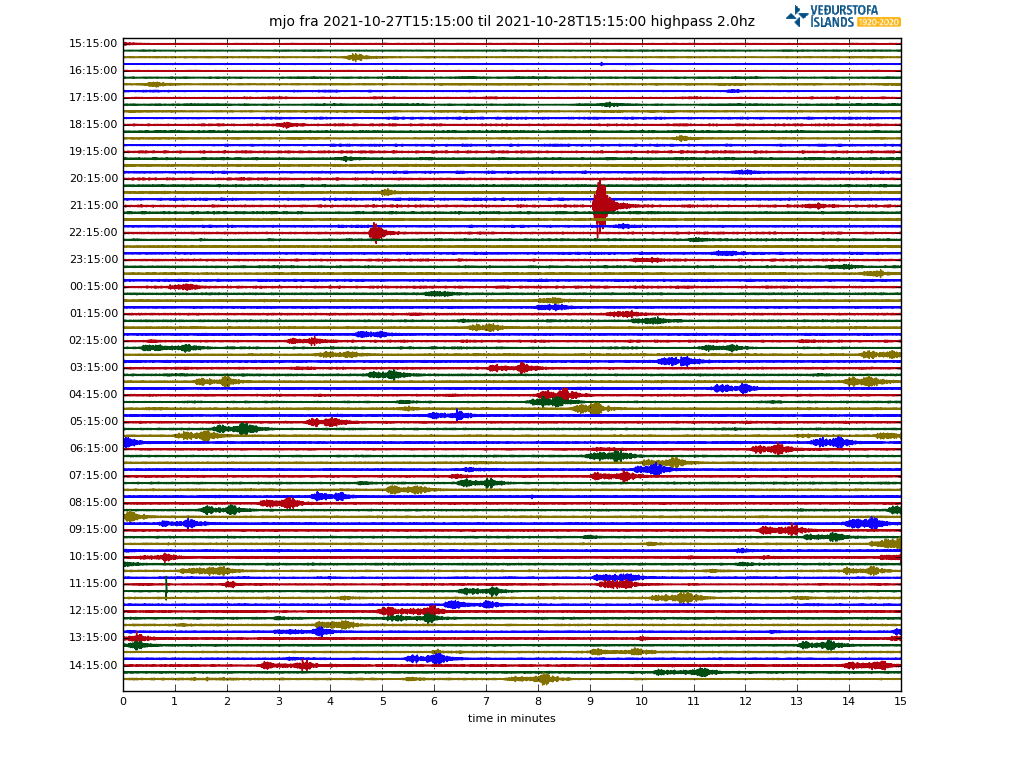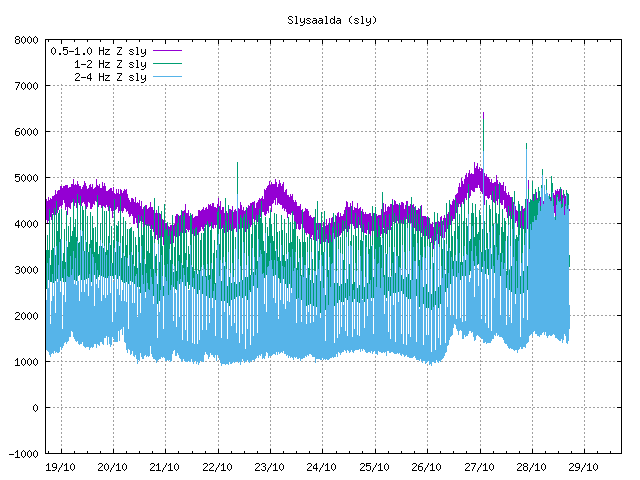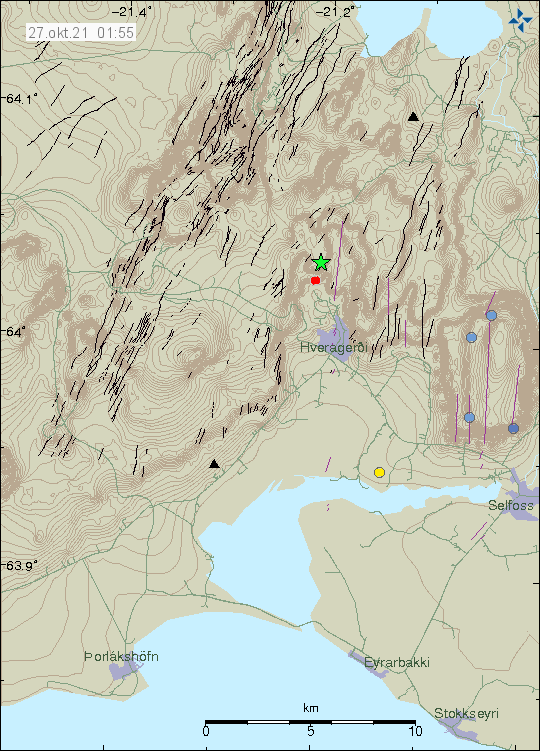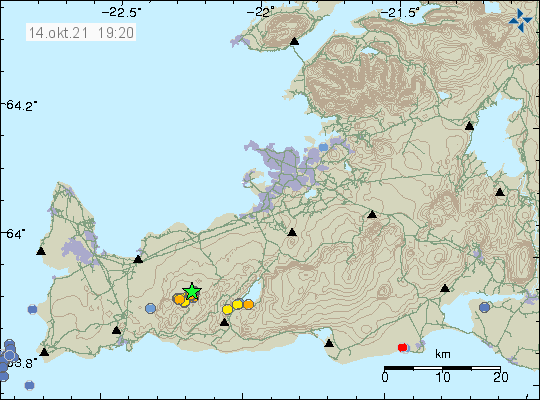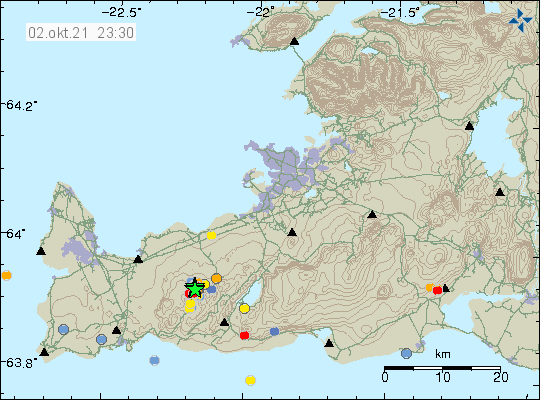Around 10:00 UTC this morning (31-October-2021) the earthquake activity of long period and low frequency earthquakes increased this morning in Torfajökull volcano. The current swarm now seems to be coming from the glacier part of the caldera, the earlier activity seems to have taken part some place in north part of the Torfajökull volcano caldera. Location of the this earthquake activity is difficult if not impossible because of the type of earthquake activity being generated in Torfajökull volcano.
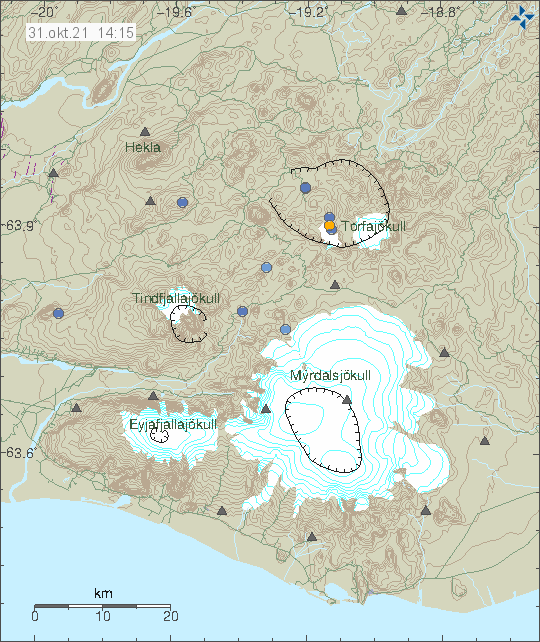
The situation is difficult to figure out just by looking at seismometer data. Icelandic Met Office is going to make a flyover today with the help of Icelandic Coast guard and try and see what is going on in Torfajökull volcano. Last eruption in Torfajökull volcano was in the year 1477 and I don’t have any idea what happens before an eruption in this volcano.



